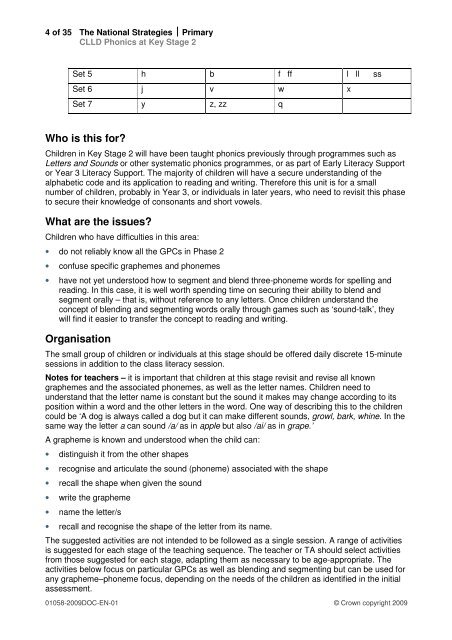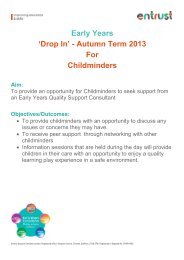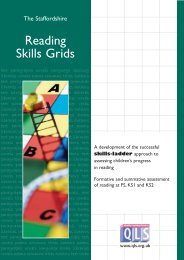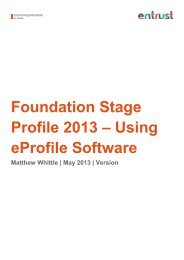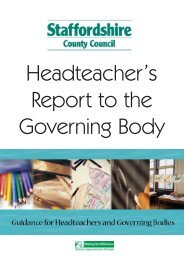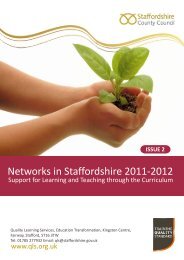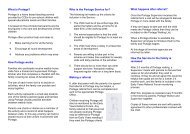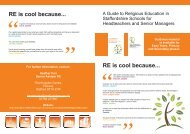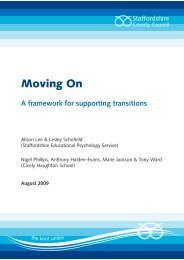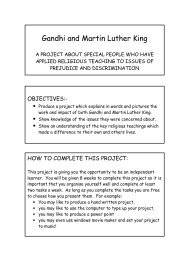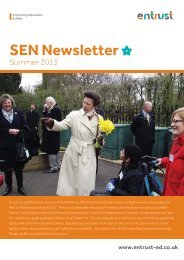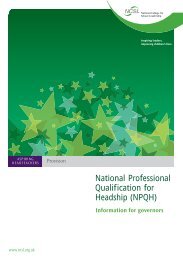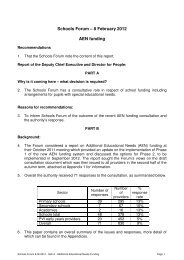CLLD Phonics at Key Stage 2 - School-Portal.co.uk
CLLD Phonics at Key Stage 2 - School-Portal.co.uk
CLLD Phonics at Key Stage 2 - School-Portal.co.uk
Create successful ePaper yourself
Turn your PDF publications into a flip-book with our unique Google optimized e-Paper software.
4 of 35 The N<strong>at</strong>ional Str<strong>at</strong>egies ⏐ Primary<br />
<strong>CLLD</strong> <strong>Phonics</strong> <strong>at</strong> <strong>Key</strong> <strong>Stage</strong> 2<br />
Set 5 h b f ff l ll ss<br />
Set 6 j v w x<br />
Set 7 y z, zz q<br />
Who is this for?<br />
Children in <strong>Key</strong> <strong>Stage</strong> 2 will have been taught phonics previously through programmes such as<br />
Letters and Sounds or other system<strong>at</strong>ic phonics programmes, or as part of Early Literacy Support<br />
or Year 3 Literacy Support. The majority of children will have a secure understanding of the<br />
alphabetic <strong>co</strong>de and its applic<strong>at</strong>ion to reading and writing. Therefore this unit is for a small<br />
number of children, probably in Year 3, or individuals in l<strong>at</strong>er years, who need to revisit this phase<br />
to secure their knowledge of <strong>co</strong>nsonants and short vowels.<br />
Wh<strong>at</strong> are the issues?<br />
Children who have difficulties in this area:<br />
• do not reliably know all the GPCs in Phase 2<br />
• <strong>co</strong>nfuse specific graphemes and phonemes<br />
• have not yet understood how to segment and blend three-phoneme words for spelling and<br />
reading. In this case, it is well worth spending time on securing their ability to blend and<br />
segment orally – th<strong>at</strong> is, without reference to any letters. Once children understand the<br />
<strong>co</strong>ncept of blending and segmenting words orally through games such as ‘sound-talk’, they<br />
will find it easier to transfer the <strong>co</strong>ncept to reading and writing.<br />
Organis<strong>at</strong>ion<br />
The small group of children or individuals <strong>at</strong> this stage should be offered daily discrete 15-minute<br />
sessions in addition to the class literacy session.<br />
Notes for teachers – it is important th<strong>at</strong> children <strong>at</strong> this stage revisit and revise all known<br />
graphemes and the associ<strong>at</strong>ed phonemes, as well as the letter names. Children need to<br />
understand th<strong>at</strong> the letter name is <strong>co</strong>nstant but the sound it makes may change ac<strong>co</strong>rding to its<br />
position within a word and the other letters in the word. One way of describing this to the children<br />
<strong>co</strong>uld be ‘A dog is always called a dog but it can make different sounds, growl, bark, whine. In the<br />
same way the letter a can sound /a/ as in apple but also /ai/ as in grape.’<br />
A grapheme is known and understood when the child can:<br />
• distinguish it from the other shapes<br />
• re<strong>co</strong>gnise and articul<strong>at</strong>e the sound (phoneme) associ<strong>at</strong>ed with the shape<br />
• recall the shape when given the sound<br />
• write the grapheme<br />
• name the letter/s<br />
• recall and re<strong>co</strong>gnise the shape of the letter from its name.<br />
The suggested activities are not intended to be followed as a single session. A range of activities<br />
is suggested for each stage of the teaching sequence. The teacher or TA should select activities<br />
from those suggested for each stage, adapting them as necessary to be age-appropri<strong>at</strong>e. The<br />
activities below focus on particular GPCs as well as blending and segmenting but can be used for<br />
any grapheme–phoneme focus, depending on the needs of the children as identified in the initial<br />
assessment.<br />
01058-2009DOC-EN-01 © Crown <strong>co</strong>pyright 2009


